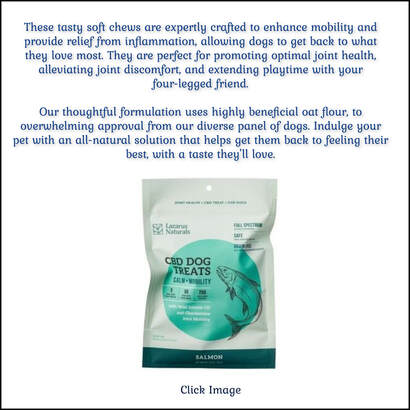|
By H.O.P.S./C.A.J.
What to do if this happens: 1. First of all, put rubber backed rugs down everywhere if you have tile/hardwood/vinyl floors. Your dog will have an extremely hard time walking on these types of floors. Don't take a chance on your dog re-injuring themselves. I have found rubber backed carpet that you can cut to fit for around $60. (Royale wall to wall) carpet. 2. Keep any other pets from pushing or shoving your dog around. They can re-injure your lame dog. Teach your other dogs they cannot push other dogs. This is teaching respect for others. |
|
3. When your dog needs to go to the potty, walk with him. If s/he is an active dog that likes to run, put a leash on so s/he can't. No running while healing.
4. Every day you will need to do leg exercises and massage. Per your Vets home instructions of course but massage will not hurt your dog. Be gentle and rub the muscle and skin. As you are able to do these leg exercises, do these in short intervals 2-3 times daily or recommended by your orthopedic vet. 5. Try to slowly taper off NSAIDS or other pain meds. After 2 weeks, hopefully your dog will no longer need any pain medications. Add in some herbs specific for joint and inflammation issues. (See our Canine Arthritis Protocol) Also CanineActiv has shown to show great improvement and a terrific alternative to NSAIDs. Also check out TRF 150-300 or Ostinol 150-350. It is great for long term healing/repair of bones and tissue. |
|
6. Do water therapy when sutures have been removed or healed. Water therapy (Hydrotherapy) is good at all times and for all issues. It has the power to help heal your dog along with re-building muscle and strength. And helps to lose weight for those dogs that are a little pudgy.
7. Make sure you have your dog on a very good joint supplement that does NOT contain preservatives or a very minute amount. If you are unsure, see this list here to help you. You can check out the Canine Arthritis Protocol as well for a list. 8. Have your vet put your dog on Adequan injections immediately. It takes approximately 4-6 weeks to really kick in good so it is important to start immediately. Have your Vet show you how to give these injections so you can do them at home and save a ton of money. You can purchase a bottle from your vet or order from the internet per your Vets Rx approval (I order from ValleyVet.com and I actually order the Equine Adequan). Loading dose is twice a week. After 4 weeks, you SHOULD be able to taper off to once a week and so on and so on. If at 4 weeks the dog is still showing signs or limping/pain and no change has occurred, you can continue the loading dose until you see signs of improvement. ( I know it took one of my dogs 2 months on the loading dose before I seen a change.) |
|
9. DO NOT feed your dog kibble of any kind. Also NO grains at all. Stay away from floured treats if possible. Look for gluten free with no junk ingredients. Better yet, make your own. Look into dried beef strips instead such as..Papa Psuka treats. Feed a raw or home-cooked diet with added supplements including magnesium and manganese. These are important. Stay away from nightshades also.
10. For traveling, make sure you do not allow your dog to jump into or out of your vehicle. Lift your dog into and help out of the vehicle. Or invest in a ramp if they can go up ramps easily. Allow plenty of room for them to lay down and be comfortable in your vehicle. If they are in a crate at times, put orthopedic memory foam in the bottom of that crate (you can buy anywhere for humans also and cut it to fit) so the dog will be very comfortable in there. Throw a blanket over the foam. Have good orthopedic dog beds all over the house for your dog's favorite spots. If the dog is large and usually sleeps in the bed with you, you will need to lift the dog yourself up onto the bed (supporting the hips or back-end if that's where your joint issues are. Keep everything in line so it doesn't shift the body and hurt them more) or the best place is on a doggy bed next to your bed so he/she doesn't decide they want to jump off your bed. It is safer on the floor. You can try a ramp or stairs for getting on the bed but these don't always work well. |
|
11. If you have stairs, you will have to work something out so that your dog does NOT under any circumstances use the staircase. They do make full body support harnesses. Invest in one if you can. Sleep downstairs with the dog if you have to. Put up a child safety gate. Anything to keep them off those stairs.
12. NO JUMPING, No Running, No sudden or jerky moves! Remember, this is a basic guide to help you through the healing process. Follow your vet's instructions on how much rest is needed along with when to start therapy. Remember, never let a vet tell you water therapy won't work. It works in ALL cases. Trust me on this one! Holistic And Organix Pet Shoppe/Canine Arthritis And Joint © |
**Canine Arthritis And Joint is intended for informational, educational and entertainment purposes only and is not a substitute for medical advice, diagnosis or treatment. Do not attempt to self-diagnose or treat any health condition. You should always consult with a healthcare professional before starting any diet, exercise or supplementation program, before taking any medication, or if you have or suspect your pet might have a health problem. The opinions expressed by Canine Arthritis And Joint are not to be replaced for medical care. This website and the information contained herein have not been evaluated by the Food and Drug Administration. The information and opinions on Canine Arthritis And Joint are not intended and cannot be used to diagnose, treat, cure, or prevent any disease. This applies to people and pets!
This site uses affiliate links such as banners you may see that allows for paid commissions.
This site uses affiliate links such as banners you may see that allows for paid commissions.
Canine Arthritis And Joint © Copyright 2015-2024
Designed By Paw Prints Web Design
Designed By Paw Prints Web Design









